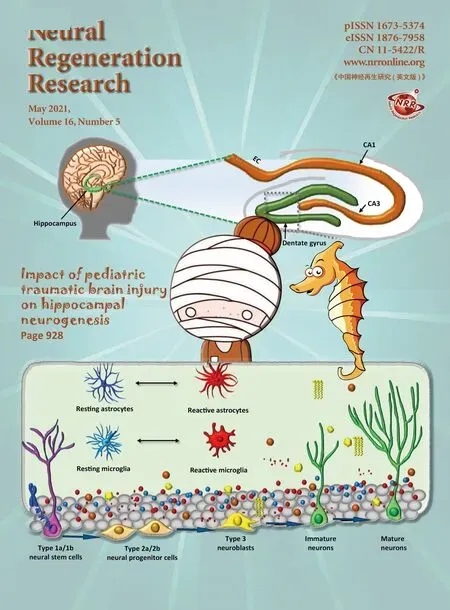中国神经再生研究(英文版)
- Therapeutic effectiveness of a single exercise session combined with WalkAide functional electrical stimulation in post-stroke patients: a crossover design study
- Enriched environment boosts the post-stroke recovery of neurological function by promoting autophagy
- Surgical intervention combined with weight-bearing walking training improves neurological recoveries in 320 patients with clinically complete spinal cord injury:a prospective self-controlled study
- Recognition of moyamoya disease and its hemorrhagic risk using deep learning algorithms: sourced from retrospective studies
- D-serine reduces memory impairment and neuronal damage induced by chronic lead exposure
- An integrative multivariate approach for predicting functional recovery using magnetic resonance imaging parameters in a translational pig ischemic stroke model
- AAV8 transduction capacity is reduced by prior exposure to endosome-like pH conditions
- Secondary release of the peripheral nerve with autologous fat derivates benefits for functional and sensory recovery
- Identification of four differentially expressed genes associated with acute and chronic spinal cord injury based on bioinformatics data
- Functional recovery after peripheral nerve injury via sustained growth factor delivery from mineral-coated microparticles
- Bioinformatic analysis of cytokine expression in the proximal and distal nerve stumps after peripheral nerve injury
- Possible role of glial cell line-derived neurotrophic factor for predicting cognitive impairment in Parkinson’s disease: a case-control study
- Therapeutic potential of dental pulp stem cell transplantation in a rat model of Alzheimer’s disease
- Pannexin 1, a large-pore membrane channel,contributes to hypotonicity-induced ATP release in Schwann cells
- Effects of bilateral subthalamic nucleus deep brain stimulation on motor symptoms in Parkinson’s disease:a retrospective cohort study
- Neuropsychological features of progranulin-associated frontotemporal dementia: a nested case-control study
- Preventive electroacupuncture reduces cognitive deficits in a rat model of D-galactose-induced aging
- Recovery of gait and injured corticoreticulospinal tracts in a patient with diffuse axonal injury
- Impact of pediatric traumatic brain injury on hippocampal neurogenesis
- Peptidylarginine deiminases and extracellular vesicles:prospective drug targets and biomarkers in central nervous system diseases and repair
- Axonal remodeling of the corticospinal tract during neurological recovery after stroke
- Mechanism underlying treatment of ischemic stroke using acupuncture: transmission and regulation
- Prospects for the application of transcranial magnetic stimulation in diabetic neuropathy
- Improving wellbeing of community-dwelling people with mild cognitive impairment: the SENIOR (SystEm of Nudge theory based ICT applications for OldeR citizens)project
- New solutions for old challenges in glaucoma treatment:is taurine an option to consider?
- Co-culture methods to study neuronal function and disease
- Do phagocytotic mechanisms regulate soluble factor secretion in microglia?
- Targeting chronic and evolving neuroinflammation following traumatic brain injury to improve long-term outcomes: insights from microglial-depletion models
- Improving brain outcomes in the growth restricted newborn: treating after birth
- Emergence of the Wallerian degeneration pathway as a mechanism of secondary brain injury
- Multifaceted roles of pericytesinterorgan interactions
- Nuclear peroxisome proliferator activated receptor-gamma (PPARγ)as a therapeutic target to treat neurodegeneration and dependence elicited by drugs of abuse
- Do not curse the darkness of the spinal cord, light TDP-43
- A crate of Pandora: do amyloids from bacteria promote Alzheimer’s disease?
- Cannabinoid pharmacology and its therapeutic uses in Alzheimer’s disease
- Evidences of hydroxytyrosol as an anti-inflammatory agent in Parkinson’s disease: insights into the mechanisms of action
- Genetics provides new individualized therapeutic targets for Parkinson’s disease
- Arteriovenous malformations: the newest Sonic hedgehog game in the postnatal brain
- Organotypic hippocampal slices,an emerging tool to model synucleinopathies

